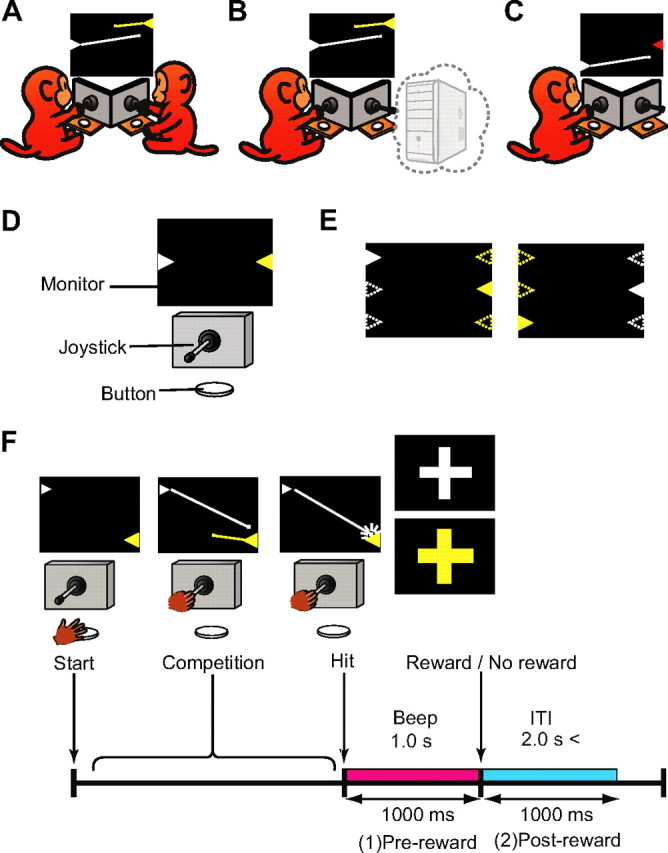Figure 1.

Task descriptions of the competitive and noncompetitive conditions. A, Schematic diagram of the Mon–Mon competitive condition. Each monkey shot bullets from the turret (triangle) of its own color. The lines from the turrets represent the trajectories of the bullets and did not appear in the actual game. B, Schematic diagram of the Mon–Com competitive condition. Only one monkey played the game competing against the computer. The PC image in the figure indicates that the rival was not a monkey but the computer. In the actual setting, there was nothing in the position of the rival. C, Schematic diagram of the One-monkey noncompetitive condition. One monkey played a noncompetitive shooting game. In this condition, no bullets came from the other side. D, Experimental setup. There was a joystick and a button in front of each monkey. Monkeys shared one PC monitor. E, Position and spatial configuration of the turrets. The turret positions were randomly selected from top, middle, or bottom, and left or right. These positions changed from trial to trial, but they were fixed within a trial. Open triangles represent possible positions at which turrets could appear. F, Time course of the competitive shooting game and the analysis periods. ITI, Intertrial interval.
